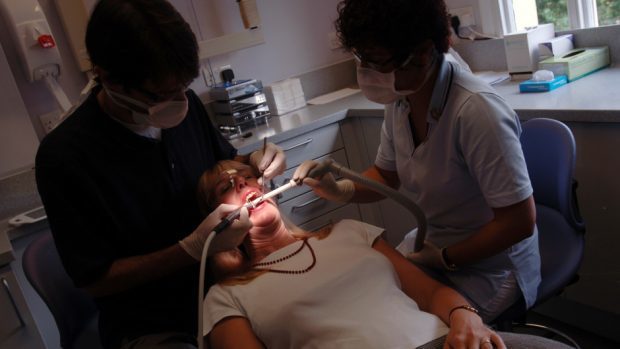A number of dental patients in the north-east are being urged to switch to independent practices after years of shortages in the area.
Dental treatment capacity reached such a dire state in the past 15 years that its specialist public dental service (PDS) was forced to step in and provide care for patients.
Ordinarily the service would provide treatment to people with complex needs, however because of a chronic shortage of NHS places, it took on board general patients.
But in recent weeks dental practices have been advising patients who do not fit the PDS criteria to seek out independent dental practices.
The request initially sparked some concern that these NHS surgeries were full, however the board has insisted this is not the case.
Tom Mason, North East MSP, said: “Any changes of this nature are bound to cause some degree of concern among patients.
“However, this appears to be a simple case of some people moving to independent practices.
“NHS Grampian must communicate this clearly so that those affected understand exactly why they should do so.”
At the height of the shortage in Grampian there were 35,000 people on the waiting list for an NHS dentist.
Many patients were forced to go private or without treatment all together.
However the board is now insisting that the city has enough capacity to accommodate NHS patients, and PDS patients will be issued with letters explaining them changes.
A spokeswoman said: “As a consequence of significant investment in dental services during the past 10 years, Aberdeen city is currently in the fortunate situation of having capacity for NHS dental registration and treatment within independent general dental practices (GDPs)
“The current Scottish Government position is that independent GDPs will continue to be the mainstay for provision of NHS care under NHS Scotland General Dental Services (GDS) Regulations.
“The expectation is that the public dental service (PDS) will continue to provide a more specialised dental service, caring for patients with more complex health and social care needs, who may find difficulty in accessing high street services.”
Dental crisis
During the worst of the shortages in the early to mid 2000s, Grampian’s emergency dental service was seeing about 20 patients a day.
The service was set up to deal with the growing dental health crisis brought on by the lack of routine check-ups available.
Most of these needed urgent treatment because they were unable to register with a dentist.
As many as three or four young children every week were undergoing operations to remove up to 20 badly-decayed teeth.
In 2004, it was reported that the emergency service had two dentists on duty at any one time and between them they were dealing with an average of 22 patients a night – an estimated 85% of these had no dentists.
Around this same time, there were about 30 NHS dentists for every 100,000 of the population.
The shortages began to be filled through the Scottish Government scheme which made millions of pounds available to open or expand existing practices.
The Scottish Dental Access Initiative (SDAI) funded dentists, who in return had to commit to make up at least 80% of their business from NHS patients for at least seven years.
However serious questions were later raised about the monitoring of SDAI and auditors rated the grant as “high risk” as a result of complacency on the part of the board.
Between 2008 and 2016 215,000 new patients were registered at a practice in the region, which was hailed as an end to the crisis by then chief executive Malcolm Wright.
